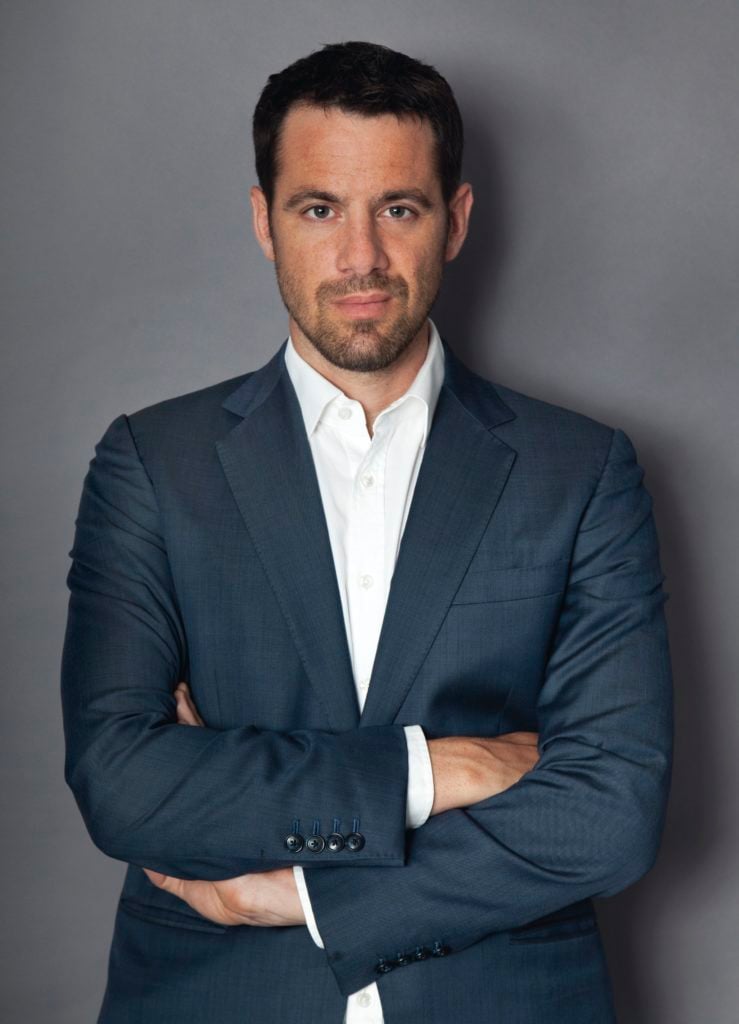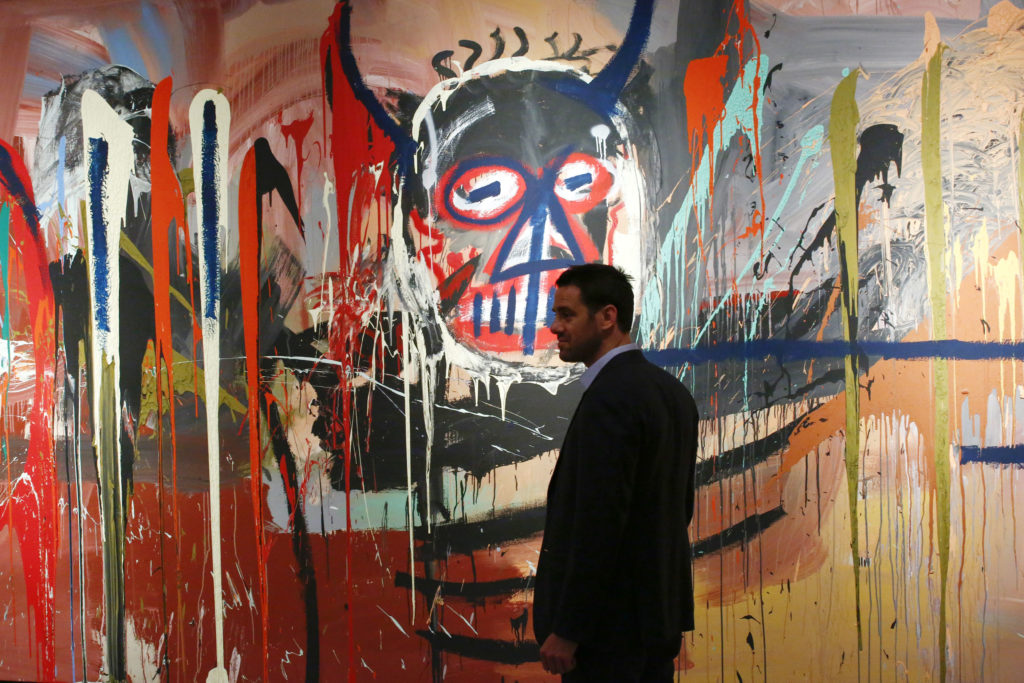People
After Making Market History With da Vinci and David Hockney, Dealmaker Loïc Gouzer Is Leaving Christie’s for Parts Unknown
The rainmaker says he will focus on environmental conservation before returning to the art world.

The rainmaker says he will focus on environmental conservation before returning to the art world.

Henri Neuendorf

Loïc Gouzer, the rule-breaking rainmaker who made headlines with his theatrical auctions and inventive, aggressive deal-making strategies, will step down as co-chairman of postwar and contemporary art at Christie’s at the end of the year. In his seven years at the auction house, the Swiss dynamo engineered a number of record-breaking (and precedent-shattering) sales, including Leonardo da Vinci’s $450.3 million Salvator Mundi last year and David Hockney’s $90.3 million Portrait of an Artist (Pool with Two Figures) last month.
In a statement issued through Christie’s, Gouzer said he plans to spend the next few months focusing his energy on environmental conservation, a cause for which he has advocated for years, before making his next move. “Those who know me best know that my two great passions in life have always been art and the environment,” he said. “I intend to spend the next few months concentrating on conservation and climate issues before coming back to the art world with a new project.”
Since joining Christie’s in 2011, Gouzer has repeatedly broken new ground by assembling sales that mixed genres and time periods with tongue-in-cheek titles such as “If I Live I’ll See You Tuesday…,” “Bound to Fail,” and “Looking Forward to the Past.” His unorthodox tactics immediately set him apart while also rubbing some long-serving auction veterans the wrong way. For example, he once made an appointment to have a mole removed with a plastic surgeon who had a painting he wanted to pursue (despite the fact that the surgeon had a working relationship with another colleague) and cold-called Christie’s owner François Pinault while still employed at Sotheby’s, according to the New Yorker.
Gouzer’s first themed sale, 2014’s “If I Live.. ,” was a curated mix of edgy work from across generations, with Richard Prince’s infamous Spiritual America as its centerpiece. Making a clear break with auction-house precedent, he advertised the newfangled event with a skateboarding video. He pushed the envelope further with auctions like “Looking Forward to the Past” in 2015, raising eyebrows by presenting a painting by Monet alongside work by present-day stars like Peter Doig.

Christie’s rainmakers Alex Rotter and Loïc Gouzer celebrate after the gavel goes down. (Photo by Eduardo Munoz Alvarez/Getty Images)
By approaching art sales like a high-stakes sport, Gouzer managed to help set the world record for an artwork at auction not once, but twice. During the “Looking Forward to the Past” sale in 2015, Picasso’s Les Femme d’Algers (Version “O”) (1955) earned the title when it sold for $179.4 million (with premium). In 2017, he helped Christie’s achieve the same feat yet again, putting Leonardo’s 16th-century painting Salvator Mundi in a contemporary art sale, where it fetched an eye-watering $450.3 million.
“Loic has brought much to Christie’s during his seven years with us, and his name will remain associated with several great ideas and projects in his field of expertise, postwar and contemporary art, and beyond,” Christie’s CEO Guillaume Cerutti said in a statement. “On behalf of the company, I wish Loic the very best with his future ventures.”
Gouzer’s resignation is the latest departure at the top of Christie’s ranks, leaving Gouzer’s co-chairman Alex Rotter—who joined from rival Sotheby’s in March 2017—to run the contemporary art department by himself. Other significant recent exits include European head of postwar and contemporary art Francis Outred and international director and specialist Koji Inoue.
Meanwhile, Sotheby’s has recently reshuffled its corner offices as well: COO Adam Chinn is due to depart at the end of the year after his role was eliminated. He will be replaced by two new hires: John Cahill as executive vice president and chief commercial officer and Ken Citron as executive vice president of operations and chief transformation officer.
Gouzer began his career at a small gallery called Analix Forever in Geneva, where he showed Chinese art before many of his peers in the West. Later, he took a job at Sotheby’s, where he attracted notice of the higher-ups after convincing Outred (then at Sotheby’s) to include a number of Chinese works in an auction in 2006. As he rose in the ranks, he developed new collectors in Russia and brokered guarantees and other then-novel financing deals. But, as a 2016 New Yorker profile noted, Gouzer eventually clashed with Sotheby’s then-contemporary art chairman Tobias Meyer and took a competing offer at Christie’s.
An avid fan of spearfishing, Gouzer sits on the board of the conservation nonprofit Oceana and frequently collaborates with his famous friends to raise money for ecological initiatives. (A charity auction that he assembled with Leonardo DiCaprio in 2013 raised $38.8 million for a variety of conservation projects.) He also promotes his environmental pursuits, shows off coveted consignments, and puts out calls for works he’s hunting for on his widely followed Instagram account.

Christie’s Loïc Gouzer with the Jean-Michel Basquiat painting that sold to Yusaku Maezawa for $57 million in 2016. Photo: KENA BETANCUR/AFP/Getty Images
In an interview earlier this year with artnet News, Gouzer said he had become somewhat disillusioned with the way collecting has changed. “You have people who can literally pull the trigger on a $20 million or $30 million painting just by seeing an image on Instagram, and without asking further questions,” he said. “It’s interesting, socially, but sometimes I get a bit depressed about it. It’s sad that maybe only eight percent of the collectors today actually enjoy discussing art and asking questions.”
Many are already wondering where Gouzer will be headed after his non-compete ends. But as Gouzer told artnet this summer, “I always have trouble thinking more than six months ahead.”